D. Dhinakaran
UNCA: A Neutrosophic-Based Framework for Robust Clustering and Enhanced Data Interpretation
Feb 23, 2025Abstract:Accurately representing the complex linkages and inherent uncertainties included in huge datasets is still a major difficulty in the field of data clustering. We address these issues with our proposed Unified Neutrosophic Clustering Algorithm (UNCA), which combines a multifaceted strategy with Neutrosophic logic to improve clustering performance. UNCA starts with a full-fledged similarity examination via a {\lambda}-cutting matrix that filters meaningful relationships between each two points of data. Then, we initialize centroids for Neutrosophic K-Means clustering, where the membership values are based on their degrees of truth, indeterminacy and falsity. The algorithm then integrates with a dynamic network visualization and MST (Minimum Spanning Tree) so that a visual interpretation of the relationships between the clusters can be clearly represented. UNCA employs SingleValued Neutrosophic Sets (SVNSs) to refine cluster assignments, and after fuzzifying similarity measures, guarantees a precise clustering result. The final step involves solidifying the clustering results through defuzzification methods, offering definitive cluster assignments. According to the performance evaluation results, UNCA outperforms conventional approaches in several metrics: it achieved a Silhouette Score of 0.89 on the Iris Dataset, a Davies-Bouldin Index of 0.59 on the Wine Dataset, an Adjusted Rand Index (ARI) of 0.76 on the Digits Dataset, and a Normalized Mutual Information (NMI) of 0.80 on the Customer Segmentation Dataset. These results demonstrate how UNCA enhances interpretability and resilience in addition to improving clustering accuracy when contrasted with Fuzzy C-Means (FCM), Neutrosophic C-Means (NCM), as well as Kernel Neutrosophic C-Means (KNCM). This makes UNCA a useful tool for complex data processing tasks
Optimizing Disease Prediction with Artificial Intelligence Driven Feature Selection and Attention Networks
Jul 31, 2024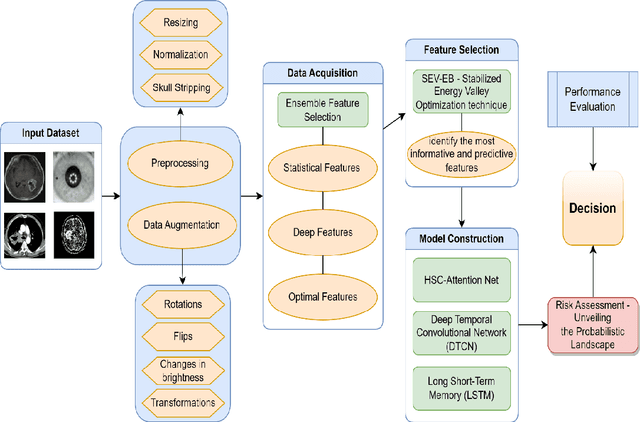
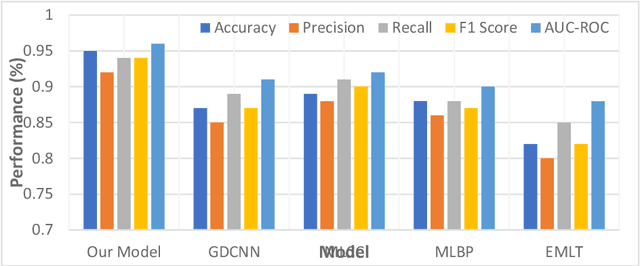
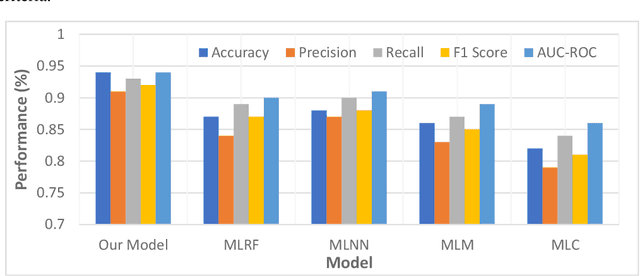
Abstract:The rapid integration of machine learning methodologies in healthcare has ignited innovative strategies for disease prediction, particularly with the vast repositories of Electronic Health Records (EHR) data. This article delves into the realm of multi-disease prediction, presenting a comprehensive study that introduces a pioneering ensemble feature selection model. This model, designed to optimize learning systems, combines statistical, deep, and optimally selected features through the innovative Stabilized Energy Valley Optimization with Enhanced Bounds (SEV-EB) algorithm. The objective is to achieve unparalleled accuracy and stability in predicting various disorders. This work proposes an advanced ensemble model that synergistically integrates statistical, deep, and optimally selected features. This combination aims to enhance the predictive power of the model by capturing diverse aspects of the health data. At the heart of the proposed model lies the SEV-EB algorithm, a novel approach to optimal feature selection. The algorithm introduces enhanced bounds and stabilization techniques, contributing to the robustness and accuracy of the overall prediction model. To further elevate the predictive capabilities, an HSC-AttentionNet is introduced. This network architecture combines deep temporal convolution capabilities with LSTM, allowing the model to capture both short-term patterns and long-term dependencies in health data. Rigorous evaluations showcase the remarkable performance of the proposed model. Achieving a 95% accuracy and 94% F1-score in predicting various disorders, the model surpasses traditional methods, signifying a significant advancement in disease prediction accuracy. The implications of this research extend beyond the confines of academia.
* 16 Pages, 4 Figures
IoT-Based Environmental Control System for Fish Farms with Sensor Integration and Machine Learning Decision Support
Nov 07, 2023Abstract:In response to the burgeoning global demand for seafood and the challenges of managing fish farms, we introduce an innovative IoT based environmental control system that integrates sensor technology and advanced machine learning decision support. Deploying a network of wireless sensors within the fish farm, we continuously collect real-time data on crucial environmental parameters, including water temperature, pH levels, humidity, and fish behavior. This data undergoes meticulous preprocessing to ensure its reliability, including imputation, outlier detection, feature engineering, and synchronization. At the heart of our system are four distinct machine learning algorithms: Random Forests predict and optimize water temperature and pH levels for the fish, fostering their health and growth; Support Vector Machines (SVMs) function as an early warning system, promptly detecting diseases and parasites in fish; Gradient Boosting Machines (GBMs) dynamically fine-tune the feeding schedule based on real-time environmental conditions, promoting resource efficiency and fish productivity; Neural Networks manage the operation of critical equipment like water pumps and heaters to maintain the desired environmental conditions within the farm. These machine learning algorithms collaboratively make real-time decisions to ensure that the fish farm's environmental conditions align with predefined specifications, leading to improved fish health and productivity while simultaneously reducing resource wastage, thereby contributing to increased profitability and sustainability. This research article showcases the power of data-driven decision support in fish farming, promising to meet the growing demand for seafood while emphasizing environmental responsibility and economic viability, thus revolutionizing the future of fish farming.
A Neural Radiance Field-Based Architecture for Intelligent Multilayered View Synthesis
Nov 03, 2023Abstract:A mobile ad hoc network is made up of a number of wireless portable nodes that spontaneously come together en route for establish a transitory network with no need for any central management. A mobile ad hoc network (MANET) is made up of a sizable and reasonably dense community of mobile nodes that travel across any terrain and rely solely on wireless interfaces for communication, not on any well before centralized management. Furthermore, routing be supposed to offer a method for instantly delivering data across a network between any two nodes. Finding the best packet routing from across infrastructure is the major issue, though. The proposed protocol's major goal is to identify the least-expensive nominal capacity acquisition that assures the transportation of realistic transport that ensures its durability in the event of any node failure. This study suggests the Optimized Route Selection via Red Imported Fire Ants (RIFA) Strategy as a way to improve on-demand source routing systems. Predicting Route Failure and energy Utilization is used to pick the path during the routing phase. Proposed work assess the results of the comparisons based on performance parameters like as energy usage, packet delivery rate (PDR), and end-to-end (E2E) delay. The outcome demonstrates that the proposed strategy is preferable and increases network lifetime while lowering node energy consumption and typical E2E delay under the majority of network performance measures and factors.
Leveraging Semi-Supervised Graph Learning for Enhanced Diabetic Retinopathy Detection
Sep 02, 2023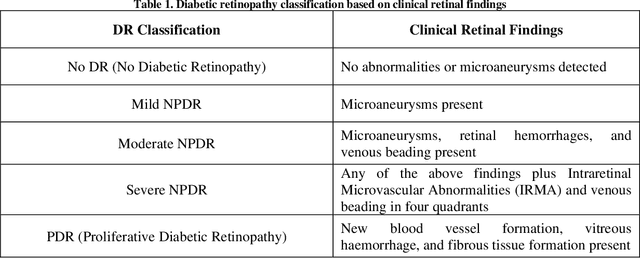
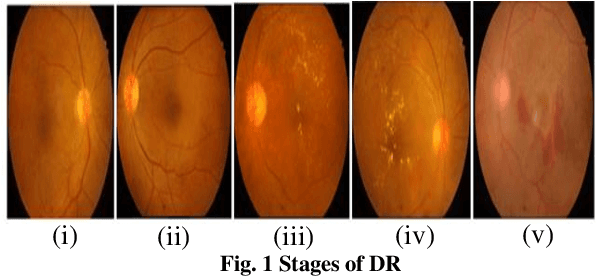
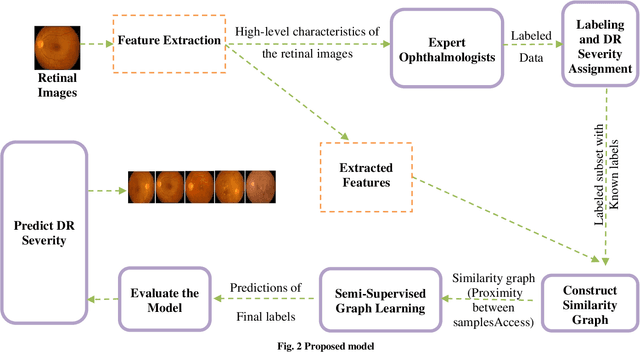
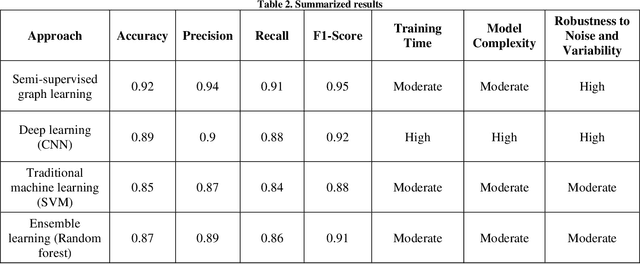
Abstract:Diabetic Retinopathy (DR) is a significant cause of blindness globally, highlighting the urgent need for early detection and effective treatment. Recent advancements in Machine Learning (ML) techniques have shown promise in DR detection, but the availability of labeled data often limits their performance. This research proposes a novel Semi-Supervised Graph Learning SSGL algorithm tailored for DR detection, which capitalizes on the relationships between labelled and unlabeled data to enhance accuracy. The work begins by investigating data augmentation and preprocessing techniques to address the challenges of image quality and feature variations. Techniques such as image cropping, resizing, contrast adjustment, normalization, and data augmentation are explored to optimize feature extraction and improve the overall quality of retinal images. Moreover, apart from detection and diagnosis, this work delves into applying ML algorithms for predicting the risk of developing DR or the likelihood of disease progression. Personalized risk scores for individual patients are generated using comprehensive patient data encompassing demographic information, medical history, and retinal images. The proposed Semi-Supervised Graph learning algorithm is rigorously evaluated on two publicly available datasets and is benchmarked against existing methods. Results indicate significant improvements in classification accuracy, specificity, and sensitivity while demonstrating robustness against noise and outlie rs.Notably, the proposed algorithm addresses the challenge of imbalanced datasets, common in medical image analysis, further enhancing its practical applicability.
 Add to Chrome
Add to Chrome Add to Firefox
Add to Firefox Add to Edge
Add to Edge